I’ve been making beaded jewelry for sale in a local gift shop, and I’ve recently discovered that the customers also seem to like the labels I’ve designed. What I can’t quite understand is just what factors are at play in a successful business identity. I’ve decided to build my identity based on my label design, and I’d very much like to avoid the pitfalls that can destroy a business. Angela Lantain
[Posted at 1:15 pm on August 21, 2008 by Angela]
Hi Angela, There’s very little in design that can “destroy” an established business. Poor design can, however, keep a new business from getting traction. A design can be misleading. It can be inappropriate. It can be sentimental or corny or otherwise cloying. It can be amateurish. And so on. The design you want is the design that expresses unambiguously who you are, beautifully, simply, clearly.Your project sounds interesting. Show us more.John McWade
[Posted at 1:30 pm on August, 2008 by John]
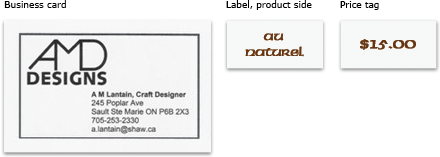 I also thought you might be interested in seeing photos of my completed projects. You can find them in my public Web albums on Picasa.Angela
I also thought you might be interested in seeing photos of my completed projects. You can find them in my public Web albums on Picasa.Angela
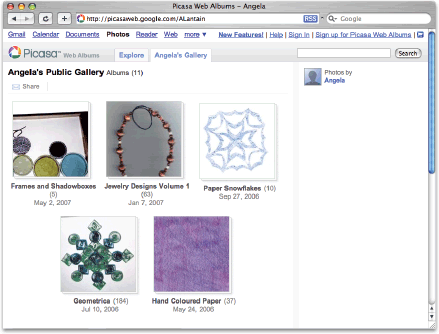
[Posted at 5:40 pm on August 21, 2008 by Angela]
[Posted at 1:02 pm on August 25, 2008 by Angela]
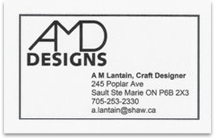
. . . when you have this? . . .
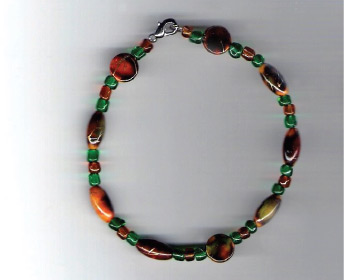
I can’t think of one reason.
Your art pieces are beautiful. They’re imaginative, professional, and—especially valuable—yours alone. No logo can give you all that. A logo will only put distance between you and your customer that’s not there now.
On top of that, what’s your goal? It’s to get your name—that is, your work and reputation—out there and make sales.
So if I were you, I’d put my art pieces right on my business cards.
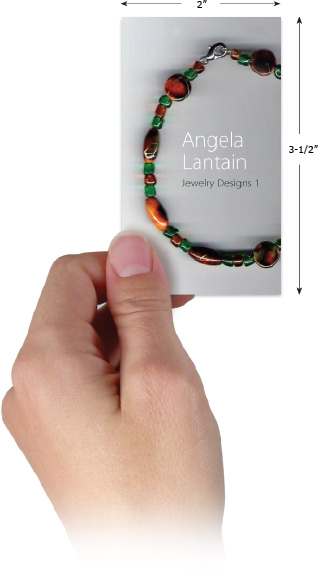
Here are four business cards . . .
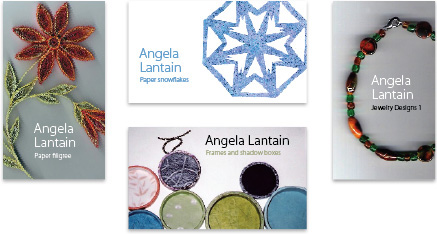
The cards are easy to make. Each has a photo of a product, plus your name in a clear typeface (Myriad), plus in smaller type the name of the product line. On the back would be your contact information. They would be easy to print on your desktop in small, gift-shop quantities. More conveniently, have moo.com print some card packs for you, and leave a pack on display for shoppers to take.
When I showed these mockups around the office, the response was, “Ooooohh, those [pieces] are beautiful. Whose are they?” (or some variation of this) And people instinctively reached towards them. I mean they physically reached out.
No logo will do that. When your stuff is so appealing that strangers want to touch a mere image, well, I’d say you’re pretty close to business-card perfection!
Try it.
John
P.S.: You need better photos. It says a lot about your pieces that their beauty shows through anyway.
[Posted at 5:48 pm on August 26, 2008 by John]
[Posted at 5:35 pm on August 27, 2008 by Angela]
Shoot against a solid, not patterned, background. White or neutral is best. I suggest shooting an entire collection on the same background. This can vary. Your artistic eye will know best.
Whenever possible, shoot in soft, ambient outdoor light, the kind you’d get through a north-facing window. Avoid direct sun, which makes harsh shadows. Avoid artificial light if you can.
If you must shoot in artificial light, set your camera to “fluorescent” or “incandescent” or whatever you’re using. This will help keep the colors true.
Pose your piece against its background. Set your camera on its tripod. Make sure it’s focusing on your piece. Steady finger, then shoot. If you’re indoors at night, the no-flash exposure will be too long to hold your finger steady, so set the camera’s automatic timer, and let it take its own picture. An SLR camera will come with a remote shutter release.
You’ll do great.
John
[Posted at 6:18 pm on August 27, 2008 by John]
John
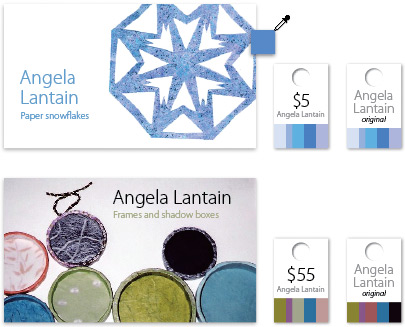
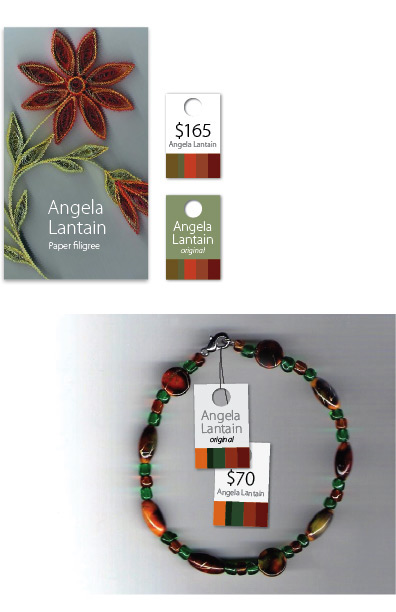
[Posted at 4:46 pm on September 12, 2008 by John]
[Posted at 5:41 pm on September 12, 2008 by Angela]











